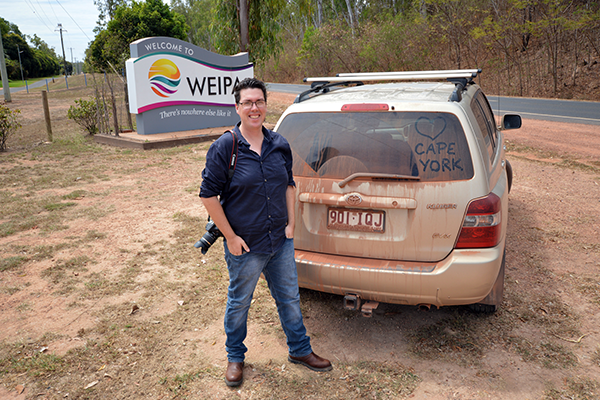
Cape York Weekly Editor Matt Nicholls
By Matt Nicholls / Cape York Weekly Editor
A labour of love is the only way to describe the challenge of running a newspaper in one of the most remote parts of Australia.
Cape York Weekly covers an area the size of Victoria, yet the region has fewer than 25,000 people.
From Cooktown to Weipa and all the way up to the northernmost point of the Australian continent, Cape York Weekly covers news in 11 different local government areas, most of them First Nations councils.
My love affair with the Cape started a decade ago, when I saw a job advertisement for an editor in Weipa. I was a Victorian living in New South Wales then, so I had to Google where Weipa was. I immediately thought it was in Western Australia, as it bobbed up on the west coast. (Turns out, Queensland has a west coast!)
What I loved about working in the Cape was the laidback lifestyle. You could wear shorts and thongs most days of the week. The shoes only came out if the air conditioning was too cold or you had to go on a mine site. But what really kept me going were the people and the complexity of the issues in the region.
Did you know that Weipa, a town with more than 3,500 people living and working in it, does not have a local council? It is still controlled by Rio Tinto, although there is an elected town authority. Ratepayers in Weipa are the only citizens in Queensland who pay GST on their rates!
Surrounding the bauxite mine are the communities of Mapoon, Napranum and Aurukun. All three have their own individual stories but, notably, all were formed in the mission era, when Indigenous people were virtually herded to a “convenient” location. On the east coast is Lockhart River, one of the most beautiful places in the world. It’s a town ripe for growth and opportunity, yet has the worst telecommunications system in Australia.
As someone who went to a private school in country Victoria, where there were zero people of colour, seeing the challenges our First Nations people were facing was confronting. Luckily, the newspaper provided a platform to shine a light on these issues.
In 2018, the owner of the paper wanted to make changes, and I took a redundancy and landed in Cairns. Then, when the pandemic hit, the paper was closed. My phone rang and rang, with people desperate to keep a news presence in the Cape. In September 2020, I returned to Weipa and the Cape York Weekly was born.
We’ve since published more than 100 editions of a free newspaper that must be flown to each community on a weekly basis. It has definitely not been easy, but it has been rewarding. In these last couple of years, we have been able to shine a light on a number of issues in our communities and had enough influence to make meaningful change. Our newspaper is well-read in both Brisbane and Canberra by politicians and policymakers. The State and Federal governments are so out of touch with what happens on the ground that they tend to rely on us to keep them in the loop.
With that comes great responsibility, which I don’t take lightly.
My advice for you, reading this, would be to consider what you can do to help your local newspaper or media outlet. Cape York Weekly has helped draw millions of dollars in funding for projects in our readership areas.
The cost of not having an independent media voice in your community is far greater than the cost of supporting one.
Matt is the 2022 winner of the LGAQ’s Bean Lockyer Ticehurst Award for Excellence in Regional Journalism.